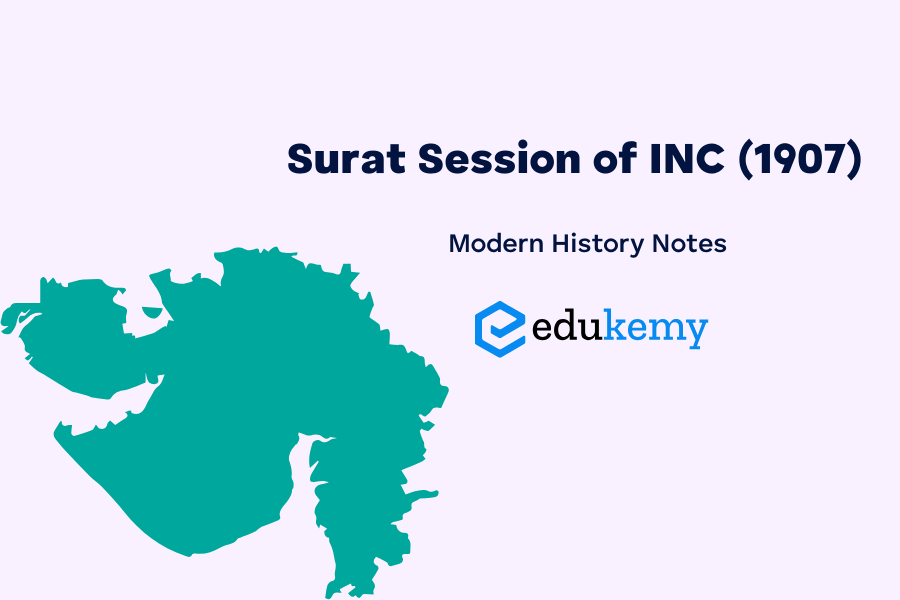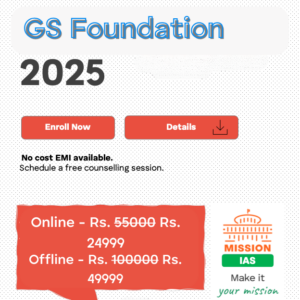The Surat session of the Indian National Congress (INC) in 1907 was a significant event in the history of the organization. Here are the key points regarding the Surat session and the subsequent split:
- Divisions within the Congress:
- The Congress was divided into two factions: extremists and moderates. The extremists, also known as the “radicals,” were led by leaders such as Bal Gangadhar Tilak, Lala Lajpat Rai, and Bipin Chandra Pal. The moderates were led by Gopal Krishna Gokhale.
The atmosphere at the Surat Session:
- The Surat session took place on the banks of the Tapti River. There was an intense atmosphere charged with excitement and anger.
- Mass meetings held before the session witnessed extremists criticizing and ridiculing the moderates. Rumors circulated that the moderates aimed to undermine the resolutions passed in the Kolkata session.
- Conflict over the Presidency:
- At the session, the extremists objected to the election of Rash Behari Ghosh as the president for the year. They believed that he had moderate leanings.
- The split between the factions became apparent when the extremists refused to accept Ghosh as the president.
Attempts at Reconciliation:
- Initially, the extremists held dominance in the session and offered to cooperate with Ghosh as the president. They sought to reconcile the differences between the factions.
- However, despite these attempts, the session could not continue smoothly, and the Congress became divided.
Outcome: Split in the Congress:
- The divide between the extremists and moderates at the Surat session led to a formal split in the Indian National Congress.
- The split marked a shift in the Congress’s dynamics and ideologies, with the extremists adopting more radical methods and pushing for swaraj (self-rule) more assertively.
- The Surat session of the Indian National Congress in 1907 was significant because it highlighted the ideological differences and growing tensions within the organization. The split between the extremists and moderates had far-reaching consequences for the future direction and strategies of the Indian independence movement.
Frequently Asked Questions (FAQs)
Q: What were the key reasons behind the split in the Surat Session of the INC in 1907?
A: The split during the Surat Session was primarily due to ideological differences and a clash of personalities within the Indian National Congress. There were two prominent factions: the Extremists led by Bal Gangadhar Tilak and Bipin Chandra Pal, and the Moderates led by Gopal Krishna Gokhale. The Extremists advocated for more radical and direct methods of protest, while the Moderates preferred a more gradual and conciliatory approach. The differences escalated, leading to heated debates and eventually a physical altercation between the two factions, resulting in the split.
Q: What were the consequences of the Surat Session split for the Indian National Congress?
A: The split had significant consequences for the Indian National Congress. It weakened the unity of the Congress and created a rift between the Extremists and the Moderates. The split also marked a shift towards more assertive and radical forms of protest, with the Extremists gaining prominence in the following years. The division within the Congress allowed the British colonial authorities to exploit the internal differences and maintain control over India for a longer period. However, it also paved the way for a more assertive and unified nationalist movement in the years to come.
Q: How did the Surat Session impact the trajectory of the Indian independence movement?
A: The Surat Session of the INC marked a turning point in the Indian independence movement. While the immediate impact was a temporary setback for the Congress due to the split, it also led to a realignment of forces within the nationalist movement. The Extremists, who emerged stronger after the split, played a crucial role in shaping the more assertive and militant phase of the independence struggle. The event highlighted the need for a united front against British colonialism and set the stage for future collaborations between different factions within the Congress. In the long run, the Surat Session contributed to the evolution of the Indian independence movement towards a more unified and determined struggle for freedom.
In case you still have your doubts, contact us on 9811333901.
For UPSC Prelims Resources, Click here
For Daily Updates and Study Material:
Join our Telegram Channel – Edukemy for IAS
- 1. Learn through Videos – here
- 2. Be Exam Ready by Practicing Daily MCQs – here
- 3. Daily Newsletter – Get all your Current Affairs Covered – here
- 4. Mains Answer Writing Practice – here
Visit our YouTube Channel – here


